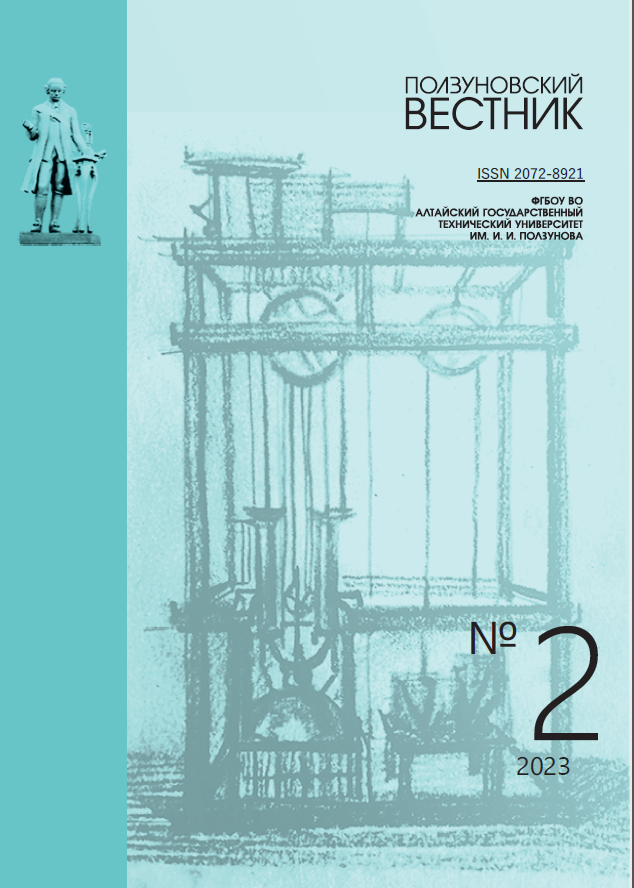WASTEWATER TREATMENT OF PIGMENT PRODUCTION PLANTS IN TWO STAGES: PREPARED ACTIVATED CARBON AND ELECTRODIALYSIS PROCESS
HCTSYY
DOI:
https://doi.org/10.25712/ASTU.2072-8921.2023.02.020Keywords:
Activated carbon, Adsorption, Electrodialysis, Ion exchange membrane, Current efficiencyAbstract
One of the most important factors limiting the development of industrial processes is the consumption of large amounts of clean water and the generation of large amounts of wastewater. Pigments are available in a wide range of colors, consisting of small molecules practically insoluble in the medium and known to be unique compounds for many industries. They are widely used in dyestuff, cosmetics, food products, pharmaceuticals, manufacturing processes, etc. This study focuses on the removal of pigments and other components from wastewater discharged from pigment plants. The separation process was carried out in two stages: the first was to use prepared activated carbon as an adsorbent to separate the pigment, and then the separation process by electrodialysis to remove other components such as salts, acids, and others. This study considers prepared activated carbon (AC) as an effective separating adsorbent. The preparation process mainly included two-stage pyrolysis and activation using potassium hydroxide (KOH) and sodium hydroxide (NaOH).
References
Molden, D. (2013). Water for food water for life: A comprehensive assessment of water management in agriculture. Routledge.
Kwakye-Awuah, B., Von-Kiti, E., Nkrumah, I., Erdoo Ikyreve, R., Radecka, I., & Williams, C. (2016). Parametric, equilibrium, and kinetic study of the removal of salt ions from Ghanaian seawater by adsorption onto zeolite X. Desalination and Water Treatment, 57(45), 21654-21663.
Anis, S. F., Hashaikeh, R., & Hilal, N. (2019). Reverse osmosis pretreatment technologies and future trends: A comprehensive review. Desalination, 452, 159-195.
Acemioğlu B. Adsorption of congo red from aqueous solution onto calcium-rich fly ash, Journal of Colloid and Interface Science, vol. 274, no. 2, pp. 371–379, 2004.
Gupta V. K., Mittal A., Krishnan L., and Gajbe V., Adsorption kinetics and column operations for the removal and recovery of malachite green from wastewater using bottom ash,” Separation and Purification Technology, vol. 40, no. 1, pp. 87–96, 2004.
Kim D. S. and Park B. Y. Effects on the removal of Pb2+ from aqueous solution by crab shell,” Journal of Chemical Technology and Biotechnology, vol. 76, no. 11, pp. 1179–1184, 2001.
Gupta, V. K. (2009). Application of low-cost adsorbents for dye removal–a review. Journal of environmental management, 90(8), 2313-2342.
Mohanty K., Naidu J. T., Meikap B. C., and Biswas M. N., Removal of crystal violet from wastewater by activated carbons prepared from rice husk, Industrial and Engineering Chemistry Research, vol. 45, no. 14, pp. 5165–5171, 2006.
Mohanty, K., Jha, M., Meikap, B. C., & Biswas, M. N. (2005). Removal of chromium (VI) from dilute aqueous solutions by activated carbon developed from Terminalia arjuna nuts activated with zinc chloride. Chemical Engineering Science, 60(11), 3049-3059.
Gupta, V. K., Mittal, A., Jain, R., Mathur, M., & Sikarwar, S. (2006). Adsorption of Safranin-T from wastewater using waste materials—activated carbon and activated rice husks. Journal of Colloid and Interface Science, 303(1), 80-86.
Alvarez, P., Blanco, C., & Granda, M. (2007). The adsorption of chromium (VI) from industrial wastewater by acid and base-activated lignocellulosic residues. Journal of Hazardous Materials, 144(1-2), 400-405.
Guo, J., & Lua, A. C. (1999). Textural and chemical characterisations of activated carbon prepared from oil-palm stone with H2SO4 and KOH impregnation. Microporous and mesoporous materials, 32(1-2), 111-117.
Carvalho, A. P., Gomes, M., Mestre, A. S., Pires, J., & de Carvalho, M. B. (2004). Activated carbons from cork waste by chemical activation with K2CO3: application to adsorption of natural gas components. Carbon, 42(3), 672-674.
Hayashi, J. I., Kazehaya, A., Muroyama, K., & Watkinson, A. P. (2000). Preparation of activated carbon from lignin by chemical activation. Carbon, 38(13), 1873-1878.
Zhong Z, Yang Q, Li X, Luo Liu Y, and Zeng G. (2012). Preparation of Peanut hull based activated carbon by Microwave Induced Phosphoric acid activation and its application in Remazol Brilliant Blue R adsorption. Ind. Crops Prod. 37(1):178-185.
Rauof A, Hammud K, Mohammed J, Akosh N, Hamza F, Hassan M, Omran N, Zanad D and Ammen E. (2015). Removal of Benzene and Toluene from their Polluted Aqueous solutions by using Natural Adsorbent. Third Iraq Oil and Gas Conference, Amara, Iraq, 28-29. October.
Hammud K, Kadham E, Raouf A, Neema R, and Al-Sammarrie A. (2016). FTIR, XRD, AFM, AND SEM Spectroscopic Studiesof Chemically MW- Waste Cooked Tea Activated Carbon. Int. J. Res. Pharm. Chem. 2016b, 6(3), 543-555.
Hammud K, Raouf A, Al-Sammarrie A, and Neema R. (2016). New Chemically Prepared-Waste Cooked Tea Based Activated Carbon: FTIR, XRD, AFM, and SEM Spectroscopic Studies. Int. J. Res. Pharm. Chem. 6(2), 220-229.
Gubari, M. Q., Zwain, H. M., Al-Zahiwat, M. M., & Alekseeva, N. V. (2021). Characteristics of the MK-40 and MA-40 Membranes for Industrial Wastewater Treatment–A Review. Ecological Engineering & Environmental Technology, 22.
Rohman, F. S., & Aziz, N. (2008). Mathematical model of ion transport in electrodialysis process. Bulletin of Chemical Reaction Engineering & Catalysis, 3(1-3), 3.
Горячий, Н. В. Электромембранные процессы: Учебное пособие. - М.: РХТУ им. Д.И. Менделеева, 2007. – 140 p.
Honarparvar, S., & Reible, D. (2020). Modeling multicomponent ion transport to investigate selective ion removal in electrodialysis. Environmental Science and Ecotechnology, 1, 1 – 9.
Кадер, Д. М., & Алексеева, Н. В. (2019). Влияние рабочих параметров и характеристик мембран на производительность аппарата обратного электродиализа. Южно-Сибирский научный вестник, (2), 161-168.
Akhter, M., Habib, G., & Qamar, S. U. (2018). Application of electrodialysis in waste water treatment and impact of fouling on process performance. Journal of Membrane Science & Technology, 8(02).
Downloads
Published
How to Cite
Issue
Section
License
Copyright (c) 2023 Mohammed Q. Gubari, Bilal S. Taha

This work is licensed under a Creative Commons Attribution 4.0 International License.















 .
. This work is licensed under a
This work is licensed under a 
